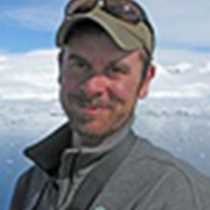Misty Fjords National Monument
It is a rare experience falling asleep in one country and waking up in another. Last night we did just that with impressive results. While Canada’s coastal waterways were formed by the same geologic processes as Alaska’s, the channels and coves of Misty Fjords National Monument left no doubt of the raw power that created this humbling place.
First light found us at the eastern end of Rudyard Bay, well within the 2,285,000 acre maze of one to two thousand foot granite faces that characterize the monument. Sitting atop these massive facades are the remnants of what formed them. Snow and ice cling to the peaks thousands of feet above us giving birth to a multitude of waterfalls that draw long white and black scars down the rock face.
Before exiting Rudyard Bay to continue our way north we took an obligatory turn into Punch Bowl Cove. Reminiscent of Yosemite’s Half Dome, this 2,000 foot sheer granite wall is enough to strain the strongest of necks. While being surrounded by such stunning examples of glaciology it is easy to forget that these formations don’t stop at the waters edge but continue to depths as low as 800 feet. If you add all that up it is easier to comprehend a glacier's ability to mold rock in the dramatic ways we have seen.
Heading northbound again on Behm Canal we decided to explore another tributary called Walker Cove with similar awe-inspiring vistas as Rudyard Bay. At the extreme eastern end of this cove we came to one of the few flat areas. Just above these aforementioned mudflats we spied a lone black bear rummaging through the foliage. Seemingly not too interested in us he kept to his business long enough for everyone to get a good look.
With our legs ready for a stretch we made our way further up Behm Canal, down Gedney Pass, and into Shrimp Bay for an afternoon of interpretive walks. Beyond identifying various berries in their flowering stages, including: blueberry, elderberry and salmon berry our naturalists lead us to the remains of what is believed to be a deer. As to the cause of death, that would be difficult to surmise, but there is no doubt that this pile of fresh white bones fed more than one specie. With bear and orca sightings dominating our trip thus far it is nice to see the little guys getting some recognition as well.
It is a rare experience falling asleep in one country and waking up in another. Last night we did just that with impressive results. While Canada’s coastal waterways were formed by the same geologic processes as Alaska’s, the channels and coves of Misty Fjords National Monument left no doubt of the raw power that created this humbling place.
First light found us at the eastern end of Rudyard Bay, well within the 2,285,000 acre maze of one to two thousand foot granite faces that characterize the monument. Sitting atop these massive facades are the remnants of what formed them. Snow and ice cling to the peaks thousands of feet above us giving birth to a multitude of waterfalls that draw long white and black scars down the rock face.
Before exiting Rudyard Bay to continue our way north we took an obligatory turn into Punch Bowl Cove. Reminiscent of Yosemite’s Half Dome, this 2,000 foot sheer granite wall is enough to strain the strongest of necks. While being surrounded by such stunning examples of glaciology it is easy to forget that these formations don’t stop at the waters edge but continue to depths as low as 800 feet. If you add all that up it is easier to comprehend a glacier's ability to mold rock in the dramatic ways we have seen.
Heading northbound again on Behm Canal we decided to explore another tributary called Walker Cove with similar awe-inspiring vistas as Rudyard Bay. At the extreme eastern end of this cove we came to one of the few flat areas. Just above these aforementioned mudflats we spied a lone black bear rummaging through the foliage. Seemingly not too interested in us he kept to his business long enough for everyone to get a good look.
With our legs ready for a stretch we made our way further up Behm Canal, down Gedney Pass, and into Shrimp Bay for an afternoon of interpretive walks. Beyond identifying various berries in their flowering stages, including: blueberry, elderberry and salmon berry our naturalists lead us to the remains of what is believed to be a deer. As to the cause of death, that would be difficult to surmise, but there is no doubt that this pile of fresh white bones fed more than one specie. With bear and orca sightings dominating our trip thus far it is nice to see the little guys getting some recognition as well.




